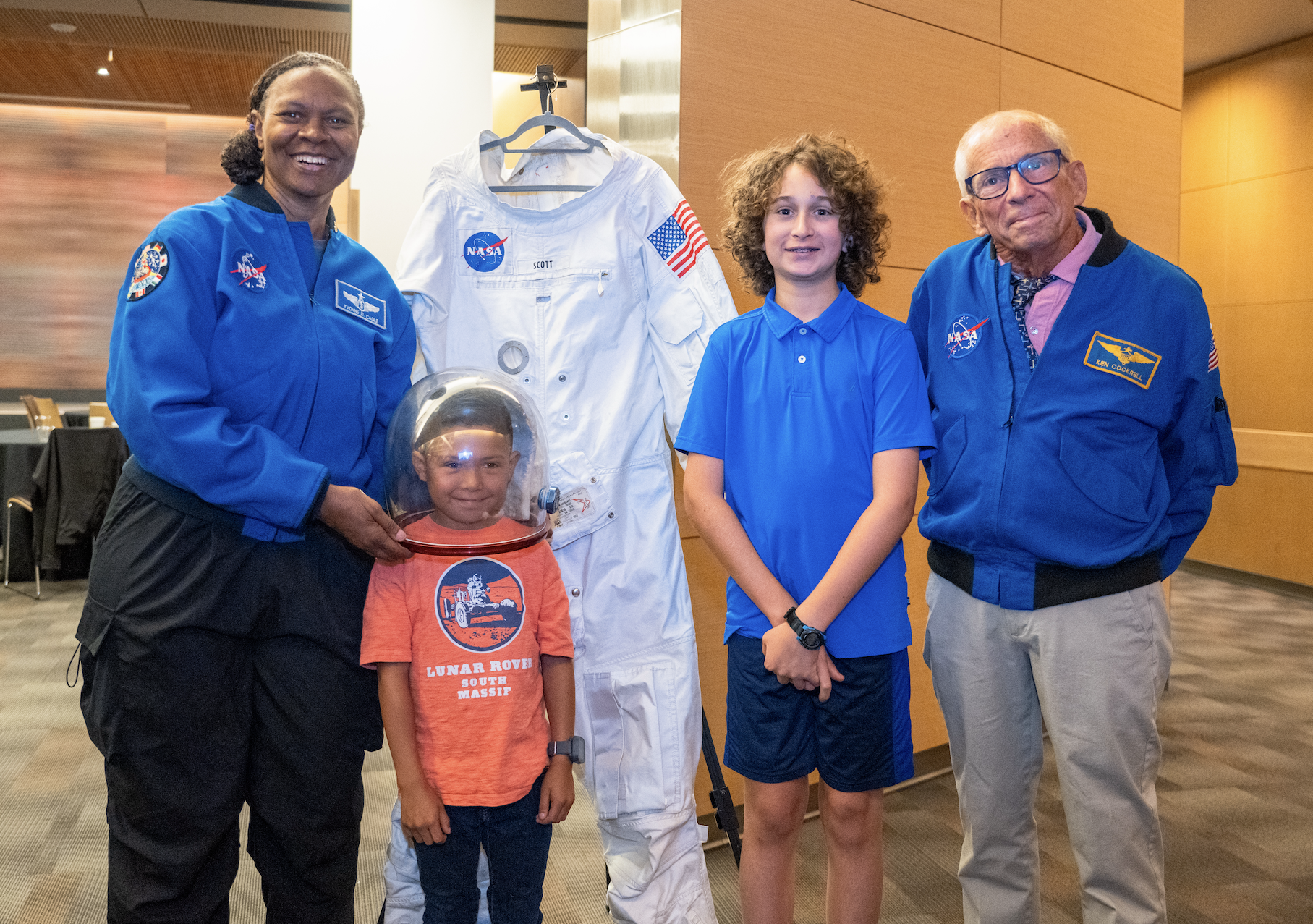
TIME Recognizes the Advanced Composite Solar Sail System
In October, the Advanced Composite Solar Sail System a project managed at NASA Ames, was recognized by TIME Magazine as a "Top Invention of 2024"! TIME Magazine also recognized two other NASA missions this year: Europa Clipper, and the Deep Space Optical Communications experiment.
The Advanced Composite Solar Sail System is a demonstration of technologies that enable spacecraft to "sail on sunlight," using solar radiation for propulsion. Results from this mission could provide an alternative to chemical and electric propulsion systems and guide the design of future larger-scale spacecraft for space weather early warning satellites, near-Earth asteroid reconnaissance missions, or communications relays for crewed exploration missions at the Moon and Mars.

This twelve-unit (12U) CubeSat features a reflective sail held taut by composite booms made from flexible polymer and carbon fiber materials that are stiffer and lighter than previous designs. The square-shaped solar sail measures approximately 80 square meters, but the new boom technology could support future missions for solar sails up to 500 square meters.
The mission launched on April 23 via a Rocket Lab Electron rocket and met its primary objective in August by deploying the boom and sail system in space. Next, the team will attempt to demonstrate maneuverability in orbit using the sail.
Congratulations to the Advanced Composite Solar Sail System team and the Small Spacecraft Technology program office, based at Ames, for this well-earned recognition. Their contributions continue to push the boundaries of what we can achieve at NASA, and this acknowledgment highlights the capabilities and vision of our center.
Representative Anna Eshoo Recognized for 32 Years of Distinguished Public Service
On Oct. 29, Ames hosted a recognition event for Representative Anna Eshoo to honor her 32 years of public service and to thank her for her enduring support for NASA and our center. Representative Eshoo announced her retirement from Congress in 2023.
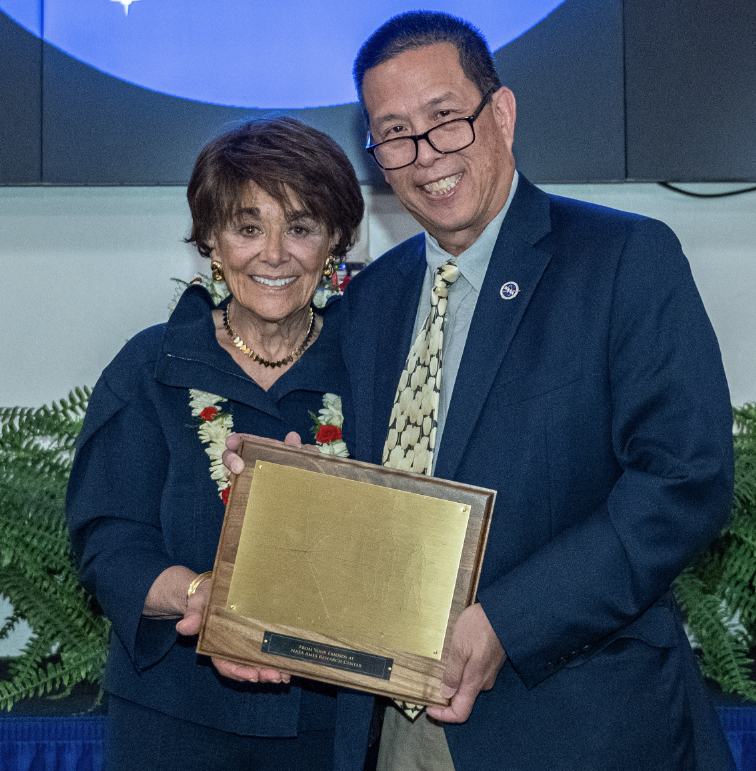
Representative Zoe Lofgren, public officials from across the Bay Area, and colleagues from around the center were in attendance to celebrate Representative Eshoo's decades of tireless support. During the formal program, Ames Center Director Dr. Eugene Tu presented her with a replica of a Pioneer Plaque (photo above) as a token of appreciation for her many years as a champion for NASA Ames – from Hangar One, to the USGS Building, and the Moffett Field Museum.
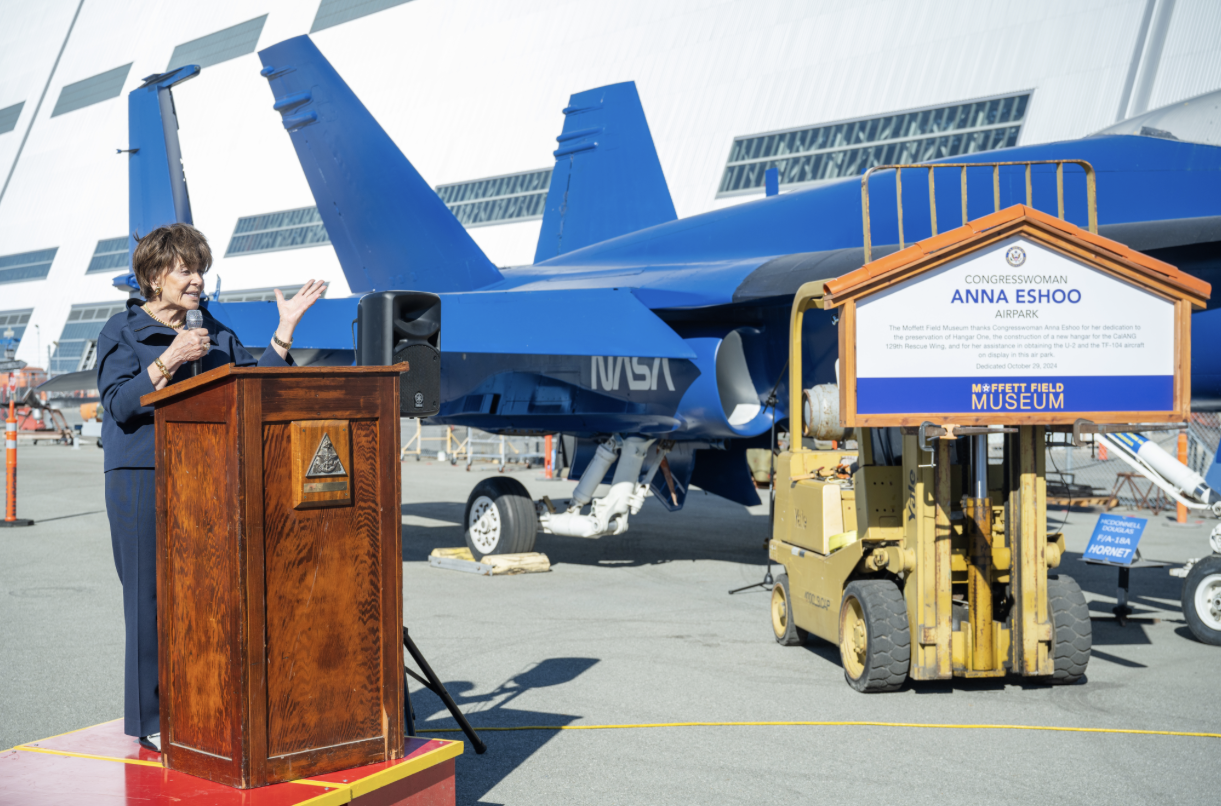
Safety Day Organizational Silence Town Hall Held
On Oct. 1, a Safety Day Organizational Silence Town Hall was held that focused on employee feedback and insights from prior Safety Culture, Federal Employee Viewpoint, and DEIA Organizational Climate surveys.
Fostering a psychologically safe culture of open communication at NASA and Ames is imperative for the safety of our team and for the collective success of our missions. This is a topic of particular interest and concern to Ames center leadership.
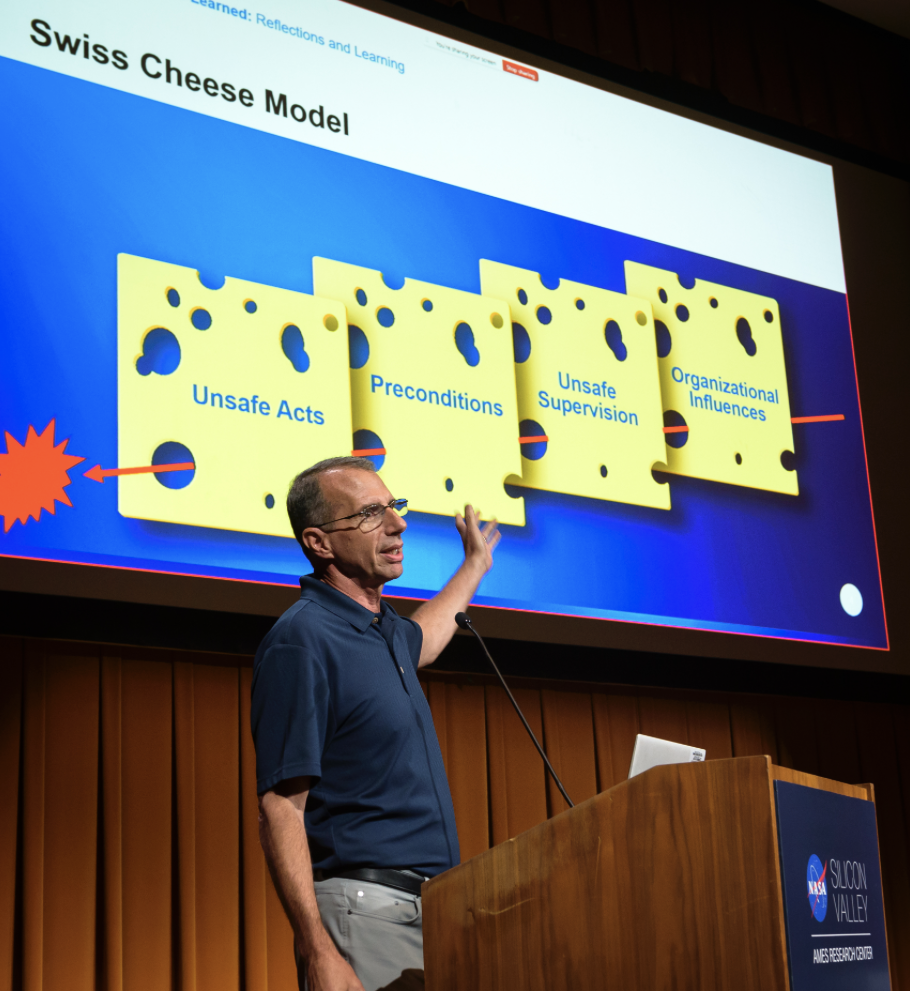
Acting Director of the NASA Safety Center, Bob Conway, presented in person at Ames to conduct the hybrid town hall event in the N201 auditorium on Organizational Silence. In addition to valuable insights and tactics, there was the opportunity for employees to ask questions via a Conference I/O channel and in person during the event.
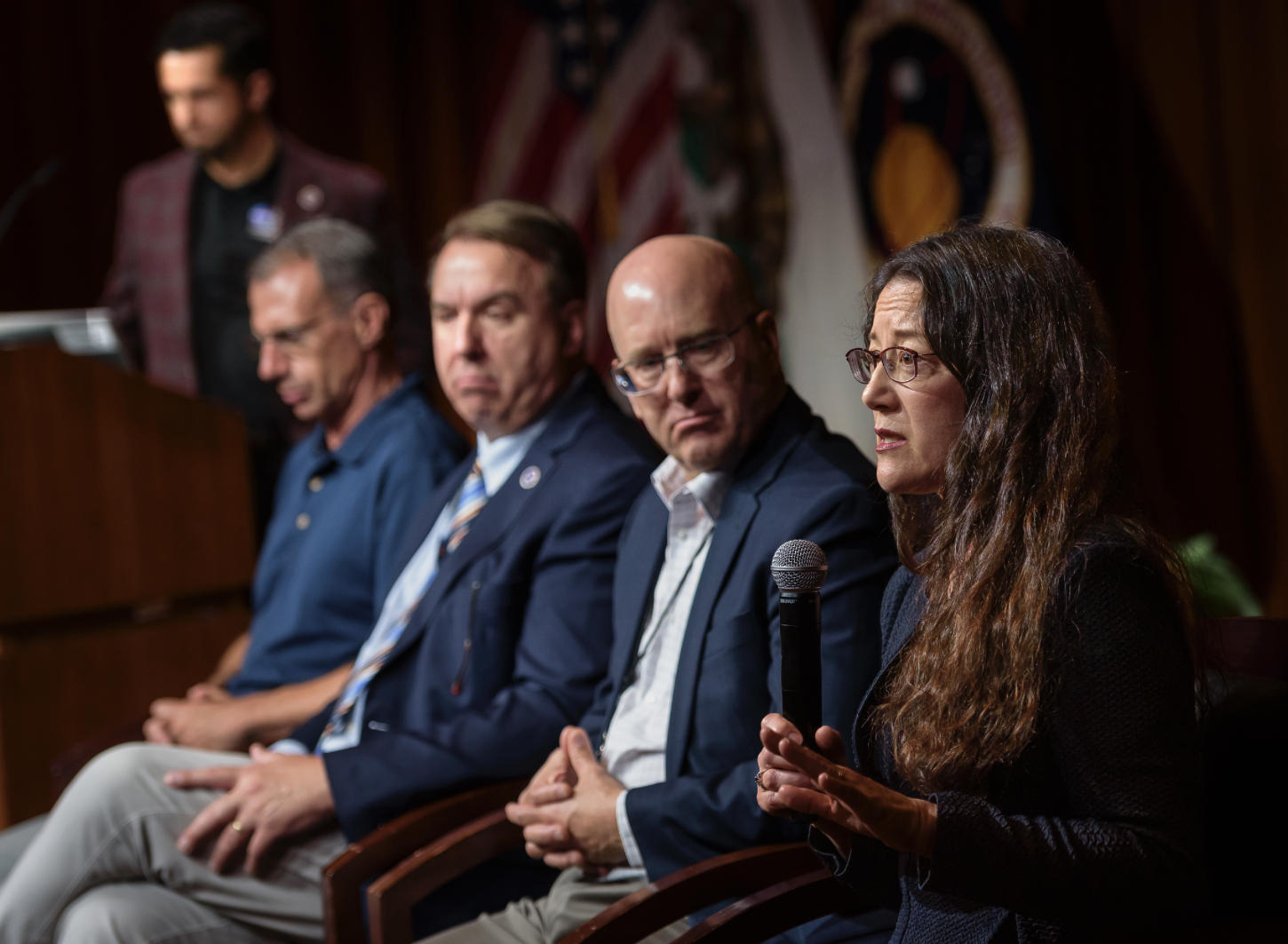
Deputy Administrator Pam Melroy Visits Ames, Attends Roundtable Discussions
On Sept. 16, Ames welcomed NASA Deputy Administrator Pam Melroy to the center. Having toured the facilities at Ames on past visits, Melroy visited the center to engage in several roundtable discussions with employees focused on procurement, NASA 2040, and leadership. She also greeted a delegation from the American Chamber of Commerce in Australia, with Australia being among the original eight international partners to sign on to the Artemis Accords in 2020. Across all of her conversations, Melroy voiced her appreciation for the Ames workforce for their steadfast dedication. She also consistently expressed her admiration for the diverse array of foundational work being done at Ames to advance NASA's mission.
President of Latvia, Edgars Rinkēvičs Visits Ames
The President of Latvia Edgars Rinkēvičs visited Ames on Sept. 18 to learn about our aeronautics research and some of the center's technical capabilities. Accompanied by a delegation of Latvian business representatives, the president visited the Airspace Operations Lab and FutureFlight Central.
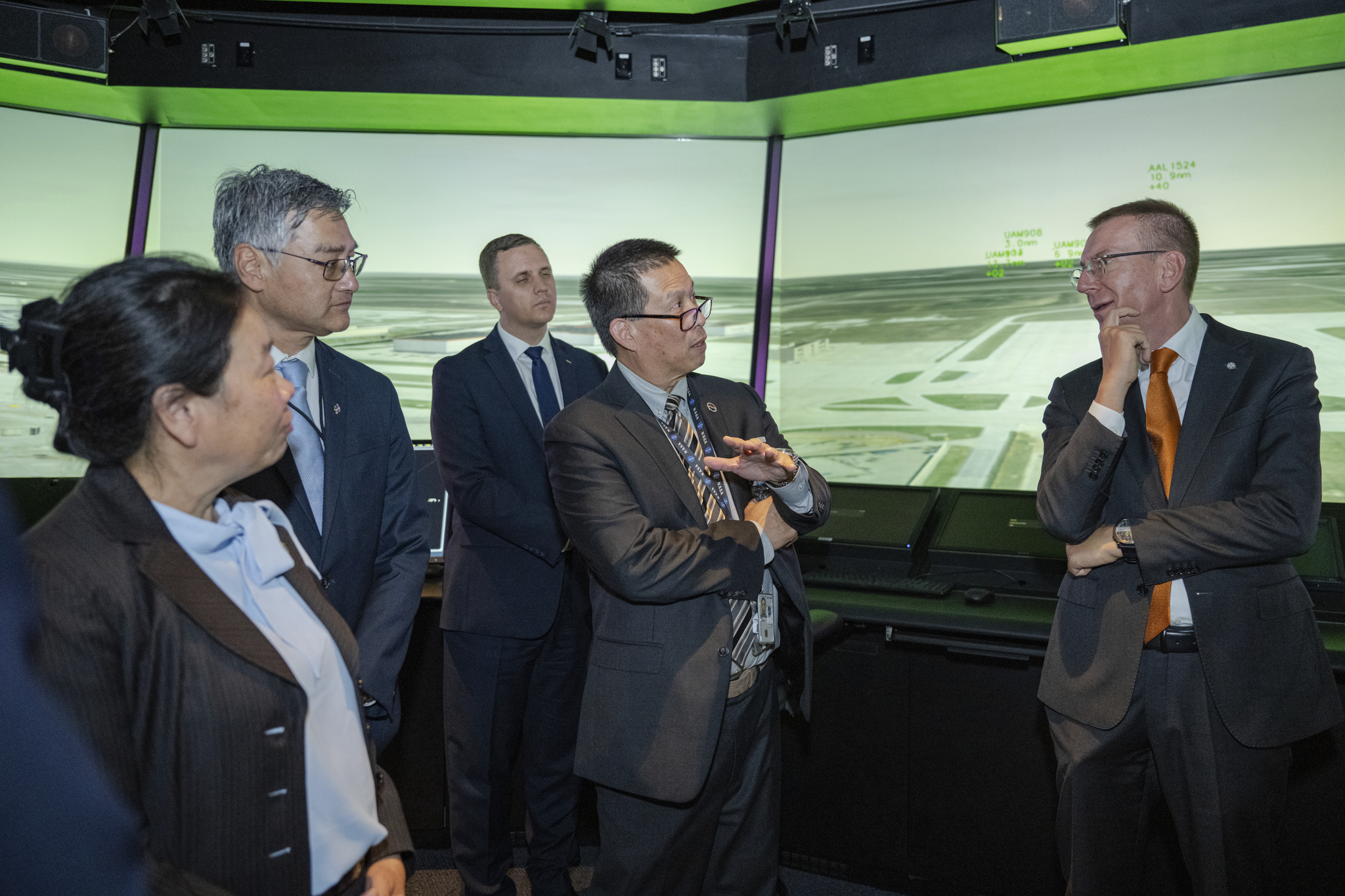
During the visit, he was briefed on the center's air traffic management simulation capabilities aimed at solving the challenges - present and emerging - of the nation's air traffic management system. Center experts discussed innovative work in airspace management, including commercial and public safety drone operations that extend from local incidents to large-scale disaster response. Through these international visits, we are showcasing NASA to the world.
Discussions, Lightning Pitches Presented at Ames' Aeronautics Innovation Forum
The 2024 Aeronautics Innovation Forum was held Sept. 17 – 19, supporting aeronautics research and innovation. A panel discussion, "Aeronautics & Space Economy" was held the first day with Dr. Parimal Kopardekar, Director of the NASA Aeronautics Research Institute (NARI) acting as the moderator. Panelists were Dr. Alex MacDonald, Chief Economist, NASA; Peter Shannon, Radius Capital, AAM Investor; Julia Black, Director of Range Operations, Stoke Space; and Dr. Yewon Kim, Professor, Stanford Graduate School of Business. Facility tours were also given during the forum. Lightning pitches were presented, along with an All Hands meeting, an aeronautics taco fiesta picnic and games at the Ames Park, and an ice cream social and Aeronautics Innovation Center (AIC) discussion.
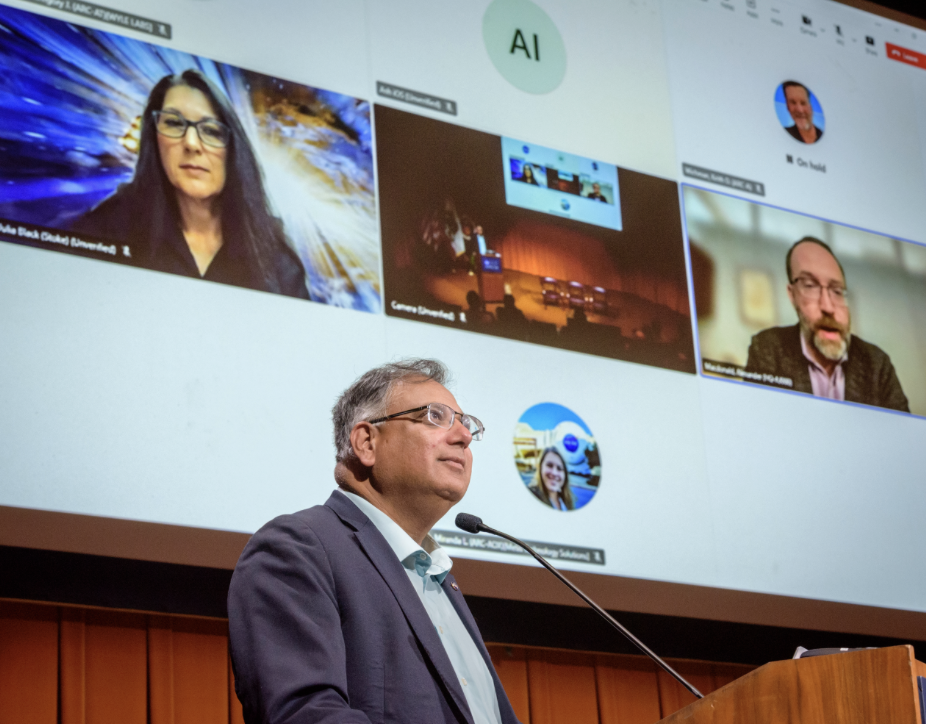
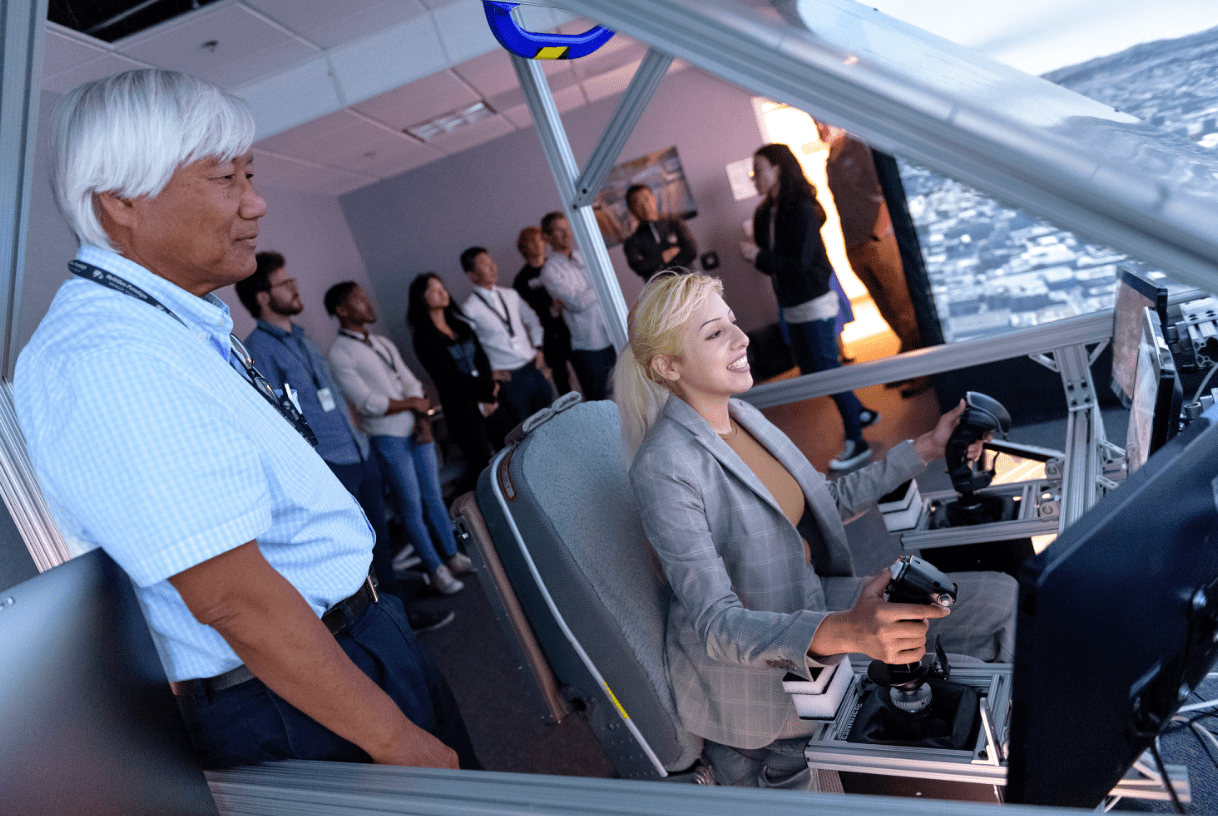
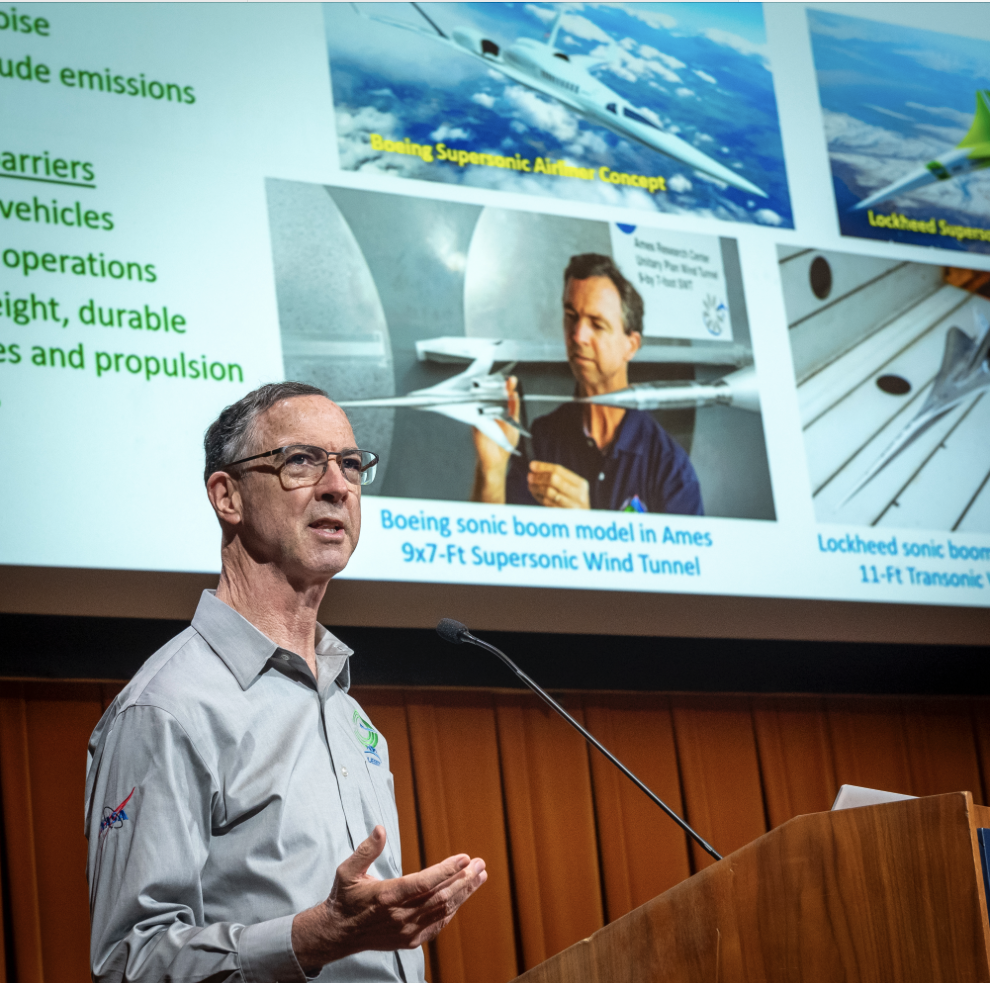
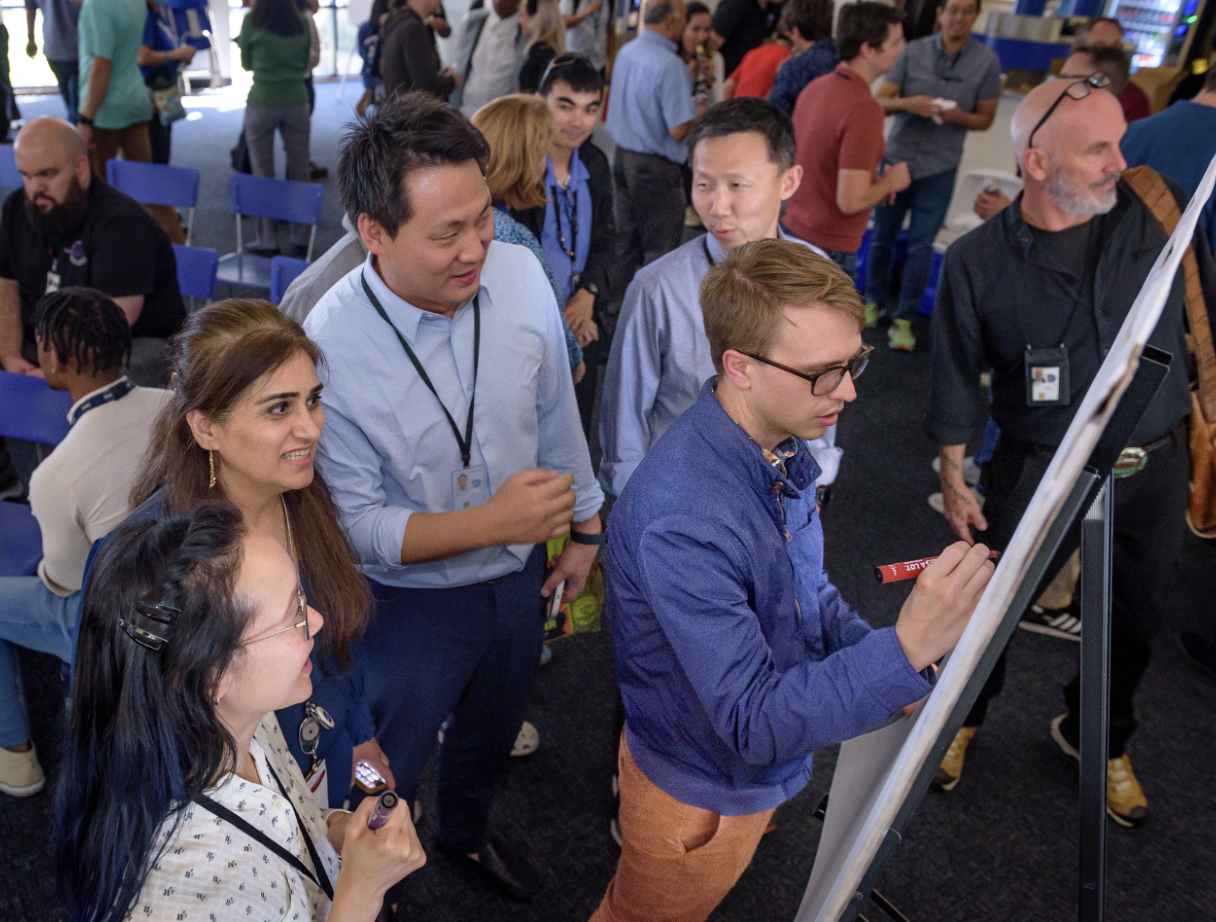
NASA and Partners Scaling to New Heights in Air Traffic Management
by Hillary Smith
NASA, in partnership with AeroVironment and Aerostar, recently demonstrated a first-of-its-kind air traffic management concept that could pave the way for aircraft to safely operate at higher altitudes.
This work seeks to open the door for increased internet coverage, improved disaster response, expanded scientific missions, and even supersonic flight. The concept is referred to as an Upper-Class E traffic management, or ETM. There is currently no traffic management system or set of regulations in place for aircraft operating 60,000 feet and above. There hasn't been a need for a robust traffic management system in this airspace until recently. That's because commercial aircraft couldn't function at such high altitudes due to engine constraints.
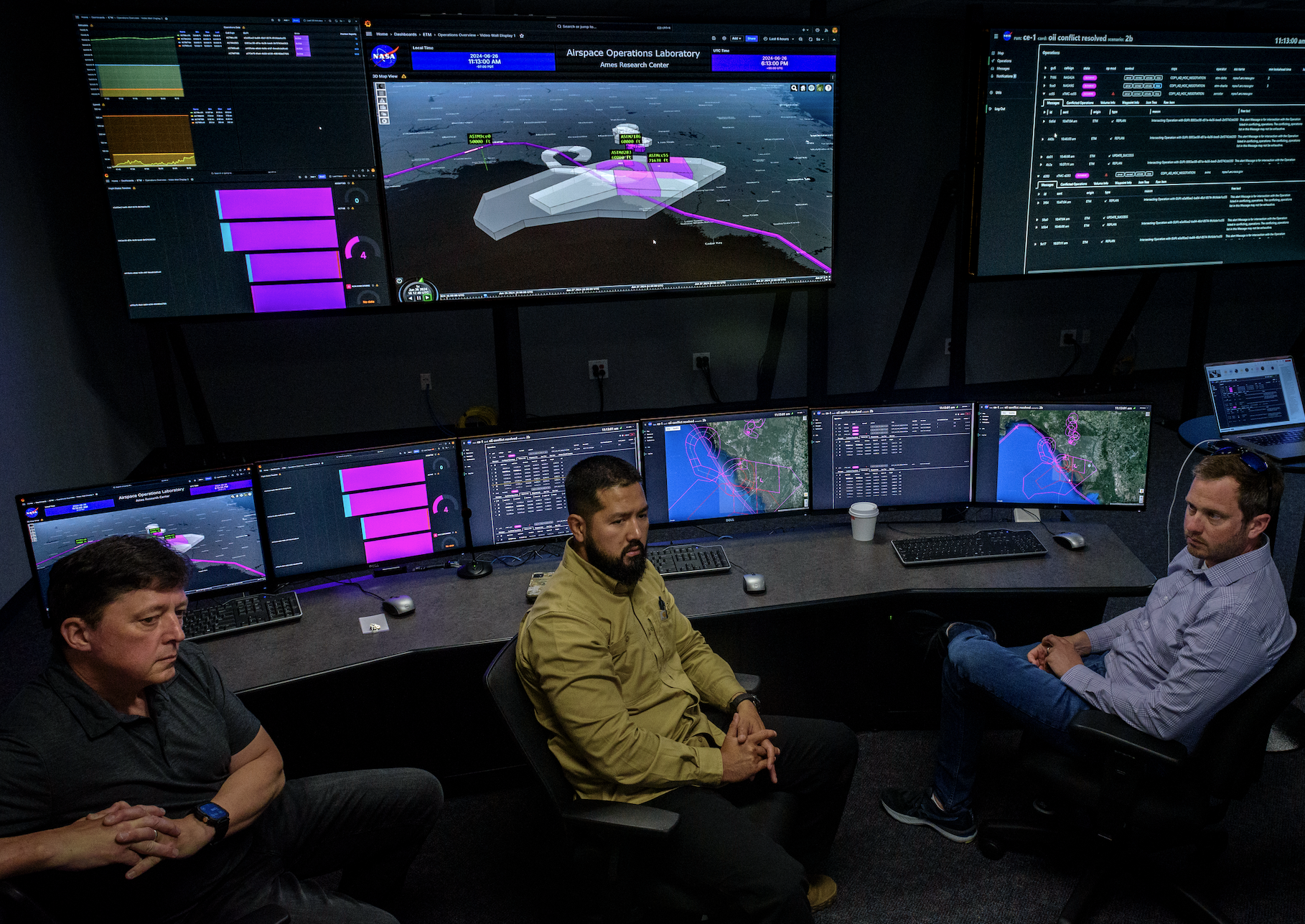
However, recent advancements in aircraft design, power, and propulsion systems are making it possible for high- altitude, long-endurance vehicles - such as balloons, airships, and solar aircraft - to coast miles above our heads, providing radio relay for disaster response, collecting atmospheric data, and more.
But before these aircraft can regularly take to the skies, operators must find a way to manage their operations without overburdening air traffic infrastructure and personnel.
"We are working to safely expand high-altitude missions far beyond what is currently possible," said Kenneth Freeman, a subproject manager for this effort at NASA's Ames Research Center in California's Silicon Valley. "With routine, remotely piloted high-altitude operations, we have the opportunity to improve our understanding of the planet through more detailed tracking of climate change, provide internet coverage in underserved areas, advance supersonic flight research, and more."
Current high-altitude traffic management is processed manually and on a case-by-case basis. Operators must contact air traffic control to gain access to a portion of the Class E airspace. During these operations, no other aircraft can enter this high-altitude airspace. This method will not accommodate the growing demand for high-altitude missions, according to NASA researchers.
To address this challenge, NASA and its partners have developed an ETM traffic management system that allows aircraft to autonomously share location and flight plans, enabling aircraft to stay safely separated.
During the recent traffic management simulation in the Airspace Operations Laboratory at Ames, data from multiple air vehicles was displayed across dozens of traffic control monitors and shared with partner computers off site.
This included aircraft location, health, flight plans and more. Researchers studied interactions between a slow fixed-wing vehicle from AeroVironment and a high-altitude balloon from Aerostar operating at stratospheric heights.
Each aircraft, connected to the ETM traffic management system for high altitude, shared location and flight plans with surrounding aircraft.
This digital information sharing allowed Aerostar and AeroVironment high-altitude vehicle operators to coordinate and deconflict with each other in the same simulated airspace, without having to gain approval from air traffic control.
Because of this, aircraft operators were able to achieve their objectives, including wireless communication relay.
This simulation represents the first time a traffic management system was able to safely manage a diverse set of high-altitude aircraft operations in the same simulated airspace.
Next, NASA researchers will work with partners to further validate this system through a variety of real flight tests with high-altitude aircraft in a shared airspace.
The Upper-Class E traffic management concept was developed in coordination with the Federal Aviation Administration and high-altitude platform industry partners, under NASA's National Airspace System Exploratory Concepts and Technologies subproject led out of Ames.
Starship Super Heavy Breezes Through Wind Tunnel Testing at NASA Ames
by Lee Mohon
NASA and its industry partners continue to make progress toward Artemis III and beyond, the first crewed lunar landing missions under the agency's Artemis campaign. SpaceX, the commercial Human Landing System (HLS) provider for Artemis III and Artemis IV, recently tested a 1.2% scale model of the Super Heavy rocket, or booster, in the transonic Unitary Plan Wind Tunnel at NASA Ames. The Super Heavy rocket will launch the Starship human landing system to the Moon as part of Artemis.
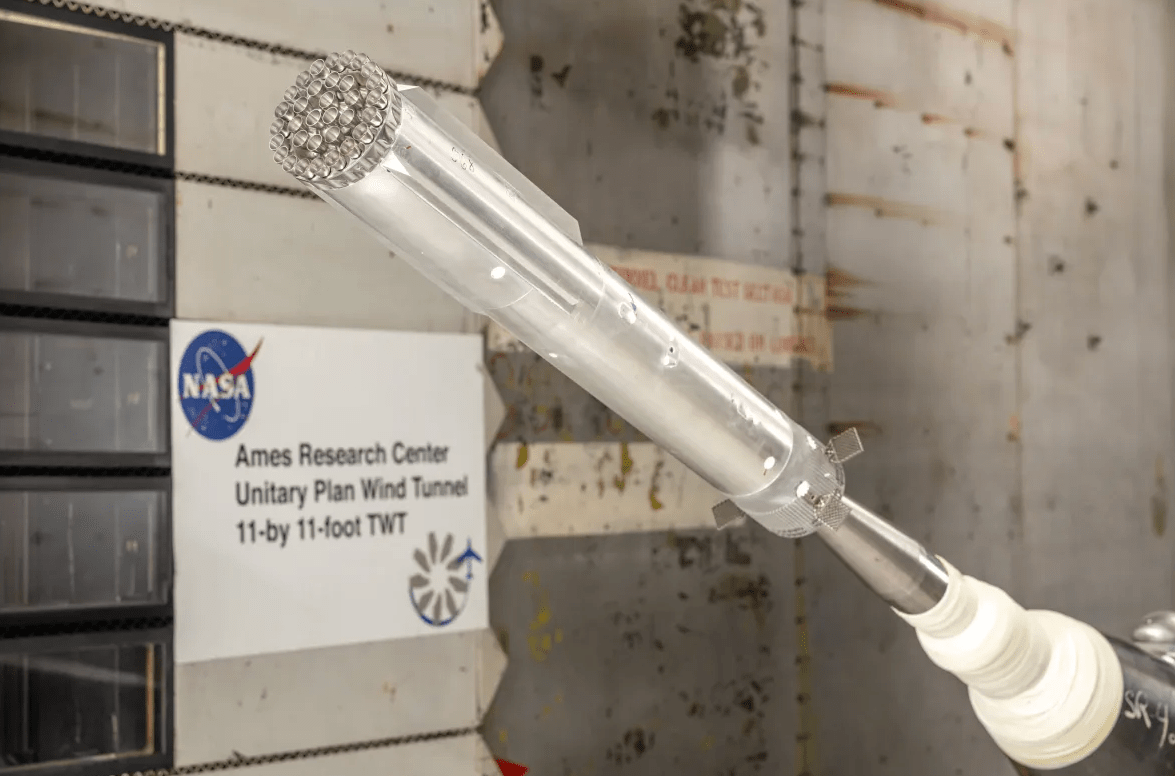
During the tests, the wind tunnel forced an air stream at the Super Heavy scale model at high speeds, mimicking the air resistance and flow the booster experiences during flight. The wind tunnel subjected the Super Heavy model, affixed with pressure-measuring sensors, to wind speeds ranging from Mach .7, or about 537 miles per hour, to Mach 1.4, or about 1,074 miles per hour. Mach 1 is the speed that sound waves travel, or 761 miles per hour, at sea level.
Engineers then measured how Super Heavy model responded to the simulated flight conditions, observing its stability, aerodynamic performance, and more. Engineers used the data to update flight software for flight 3 of Super Heavy and Starship and to refine the exterior design of future versions of the booster. The testing lasted about two weeks and took place earlier in 2024.
After Super Heavy completes its ascent and separation from Starship HLS on its journey to the Moon, SpaceX plans to have the booster return to the launch site for catch and reuse. The Starship HLS will continue on a trajectory to the Moon.
To get to the Moon for the Artemis missions, astronauts will launch in NASA's Orion spacecraft aboard the SLS (Space Launch System) rocket from the agency's Kennedy Space Center in Florida. Once in lunar orbit, Orion will dock with the Starship HLS or with Gateway. Once the spacecraft are docked, the astronauts will move from Orion or Gateway to the Starship HLS, which will bring them to the surface of the Moon. After surface activities are complete, Starship will return the astronauts to Orion or Gateway waiting in lunar orbit. The astronauts will transfer to Orion for the return trip to Earth.
With Artemis, NASA will explore more of the Moon than ever before, learn how to live and work away from home, and prepare for future human exploration of the Red Planet. NASA's SLS, exploration ground systems, and Orion spacecraft, along with the human landing system, next-generation spacesuits, Gateway lunar space station, and future rovers are NASA's foundation for deep space exploration.
2024 NASA SmallSat In-Person LEARN Forum Held
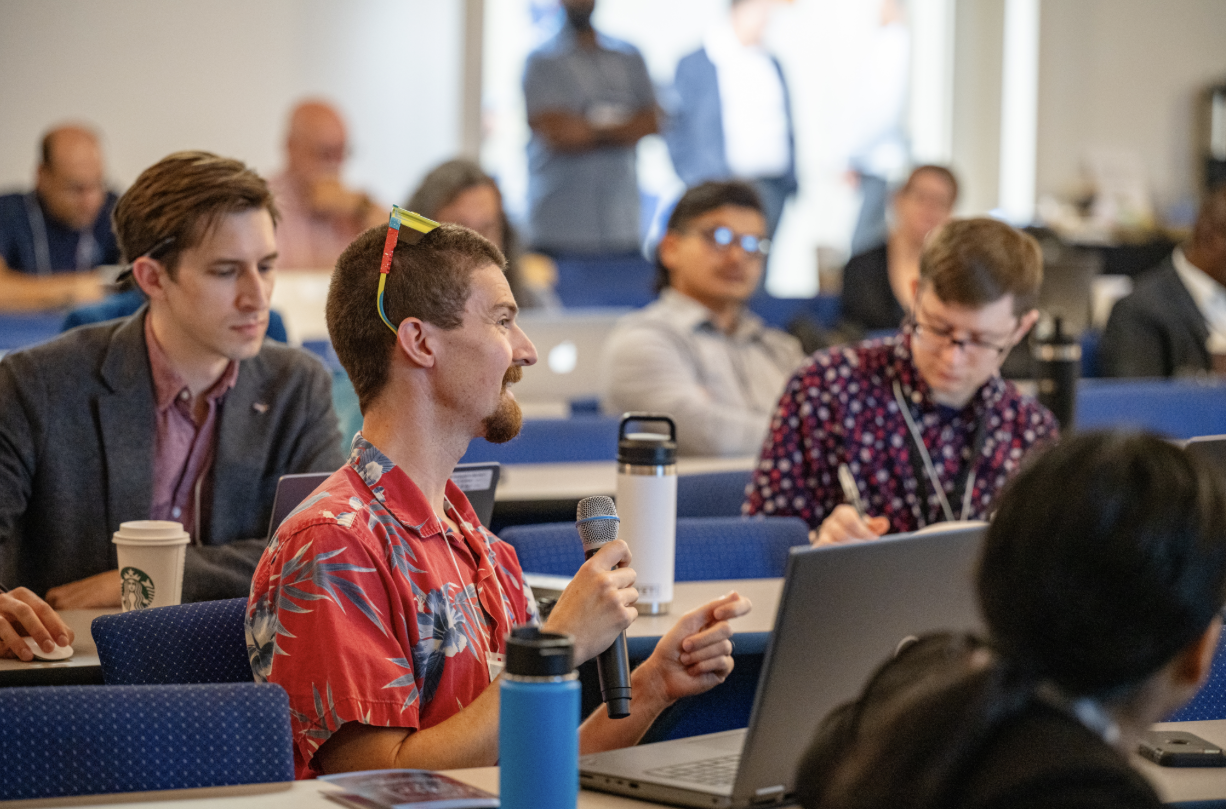
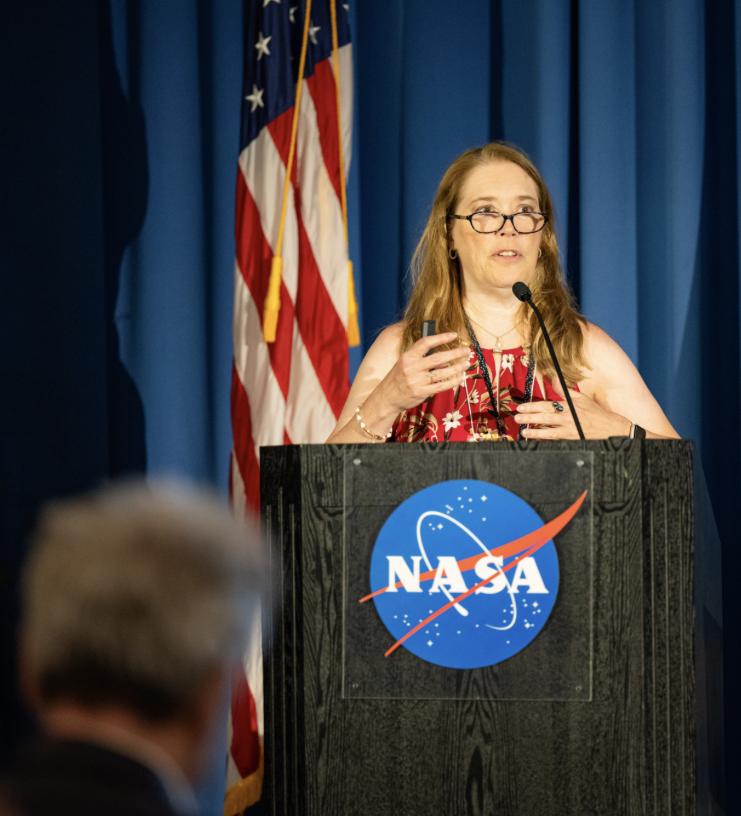

NASA Astronauts, Leadership Visit Children's Hospital, Cancer Moonshot Event
NASA astronauts, scientists, and researchers, and leadership from the University of California, San Francisco (UCSF) met with cancer patients and gathered in a discussion about potential research opportunities and collaborations as part of President Biden and First Lady Jill Biden's Cancer Moonshot initiative on Oct. 4.
Roundtable discussions centered conversation around the five hazards of human spaceflight: space radiation, isolation and confinement, distance from Earth, gravity, and closed or hostile environments. Many of these hazards have direct correlations to a cancer patient's lived experience, like the isolation of a hospital room and long-term effects of radiation.
